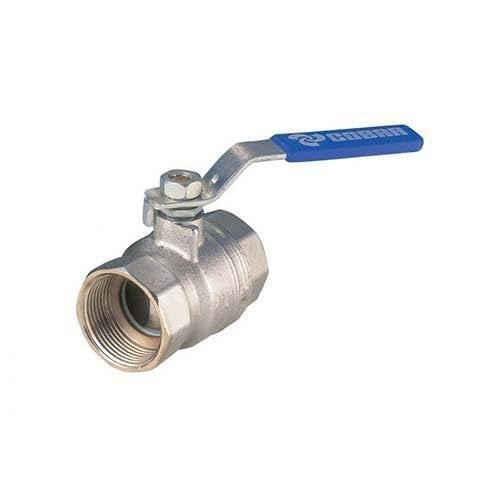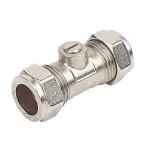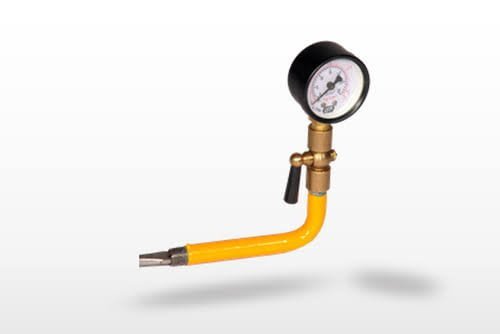An isolation valve is a valve in a fluid handling system that did the work of stopping the flow of process media to a specific location, typically for maintenance or safety reasons.They can also provide flow logic (choosing one flow path over another) and connect external equipment to a system.

A valve is classified as an isolation valve based on its intended function in a process pipe loop, not on its design. Many different types of valves can be classified as isolation valves, but when engineering and selecting the right valve, important criteria such as pressure and temperature ratings, shut-off (classification and direction), process conditions, flow capacity (Cv), pipe connections, manual or automated, required service life, industry standards, system performance, and total costs of ownership all should be considered.
Note :- The below mentioned are all isolation valve.
Ball Valves
Butterfly Valves
Gate Valves
Globe Valves
Check Valves
Plug Valves
Needle valves
Before understanding the types of isolation valve ,first we understand Concept of isolation valve
Working of Isolation valve
Isolation v/v is used in many industries but To easily understand the concept of an isolation valve, one can think of the valves under a kitchen,toilet or bathroom sink in a typical household.
If you identify that your leak is coming from a tap or a toilet, you may be able to isolate it by using an isolation valve rather than turning off the water to your entire property. The isolation valve should look something like this and is usually located directly under your toilet or directly under your tap.”

To turn it off, you’ll need a flat head screwdriver. When the water is on, the slot on the isolation valve should be following the pipe work; if you turn it a quarter turn in either direction, the slot should be going across the pipe work; that’s how you know the isolation valve is in the off position.”
These types of valves are installed in a series of pipe,When the v/v is opened, the fluid starts to flow, and when the valve is closed the fluid stops flowing.
A valve like this is responsible for fully closing (fully closed) or fully opening (fully opened) a flow. Because its only function is to open or close, this type of valve is known as an ON / OFF valve or an isolation valve.
Types of an Isolation valve
Isolation v/v are used for diverting process media, facilitating maintenance, equipment removal and shutdown. The operation, application and construction of gate, globe, piston and diaphragm valves are studied in this tutorial.
The above all valves are used used as isolation valve.As we already read that its name is isolation because of its function not because of its design
Based on movement, Isolation valvesare if two types ;
1.Rotary movement valves and
2.Linear movement valves.
1.Linear movements valves
The obturator moves in a straight line. This category includes gate valves, globe valves, diaphragm valves, and pinch valves.
Linear movement valves evolved from sluice gates, which were originally used to control the flow of water in irrigation channels. Since then, numerous designs and types have been developed for use in almost every type of flow application. Although linear movement valves have straight-line obturator movement, fluid flow can be at right angles to this movement (as in gate valves) or in the same direction (as in globe valves). The linear movement valve’s main feature is that tight shut-off can be achieved by tightening the obturator on a threaded stem.
2.Rotary movements valves :-
The obturator rotates about an axis that is perpendicular to the flow direction. The two most common rotary valves used in steam applications are ball valves and butterfly valves.
Ball valve,globe valve, butterfly valve come under in this category.
Isolation valves must effectively stop fluid passage. In general, gate valves, ball valves, and plug valves are thought to provide tight and effective shut-off. Globe and butterfly valves may not be tight shut-off due to wear on the plug or seat, or due to their design, and may not be suitable for effective isolation.
Pressure gauge isolation valve
Pressure Gauge with Isolation valve fitted on discharge side of the blower is to monitor the system pressure and Isolation valve can be closed during maintenance. The Isolation valve must be closed after noting down the pressure readings. It should be opened only when necessary.

What type of valve is used to isolate pressure gauges
Ball valves (90° angle) protect the pressure gauge by dampening pressure surge during opening and completely isolating the pressure gauge. These valves, which are pressed in high-resistance steel, have undergone rigorous testing to ensure dependability and long life.
Process plant practice
Isolation valves can be in either the normally open (NO) or normally closed (NC) position .
Normally open valves are located between pressure vessels, pumps, compressors, tanks, pressure sensors, liquid level measurement instrumentation, and other components and allow fluids to flow between them or be connected to sensors.
Controlled closure of open valves allows for the isolation of plant components for 1.testing or maintenance of equipment, 2.or it allows fluid flow to specific flow paths.
Normally closed valves are used only when it is necessary to connect fluids and process components to other systems. Vent and drain valves are examples of normally closed valves that are only opened when a system needs to be depressurized (vent) or drained of fluids.
Some common applications are :-
1.Uses in household as we understand in starting.
2.Isolation valves are installed in the drain or vent lines of pressure measuring instruments and are operated when the contents must be drained or vented before any maintenance work can start.
Common application
1.Firewater control
2.Pipeline safety systems
3.Residential plumbing systems (both water and gas)
4.Nuclear reactors
5.Oil and gas wells
6.Chemical plant
7.Oil production plant
People also ask
What is an isolation valve used for?
An isolation v/v is used in fluid management system for Stopping the Flow of Process Of fluid in a pipeline.
What type of valves are used for isolation?
Gate, globe, ball, butterfly, play, and diaphragm valves are all types of stop or isolation valves.These all valves used for isolation of fluid in a pipeline.
Is a control valve An isolation valve?
Mainly two types of valves: 1. Control valves, which are defined as manipulating a flowing fluid to keep process variables as close as possible to the desired set point; and 2. Isolation or shutoff v/v which have one primary function—to provide tight shutoff to ensure fluids don’t pass downstream
How do you know if an isolation valve is open or closed?
Modern systems typically use quarter turn valves (either handle or screwdriver operated) that are unobtrusive when installed in the pipework. When the handle (or screwdriver slot) is in line with the valve, the valve is open; when they are at right angles, the valve is closed.
Can a gate valve be an isolation valve?
Yes,Gate valves (GV) are specifically used in isolation applications in various piping systems. And they can be fully opened or fully closed.
Gate valves, like other isolation valves such as ball valves, plug valves, piston valves, diaphragm valves, butterfly valves, and pinch valves, are isolation valves.
Is a globe valve An isolation valve ?
A globe valve can be used either as an isolation valve or a regulating valve, depending on its trim. Globe valves are primarily designed to regulate flow in the partially open position, while gate valves are designed for the fully opened or fully closed position.
Check Out Other Important Topics
Home IC Engine Electrical Important PDFs Boilers Synergy Maritime Exam Naval Arch Interview Questions Difference Between Types of Pumps Types of Valves MEO Class 4 Auxiliary Machines
Source :- Wikipedia

